The Razor’s Edge: How to Choose a Defensive Blade for Every Day Carry
The Razor’s Edge: How to Choose a Defensive Blade for Every Day Carry
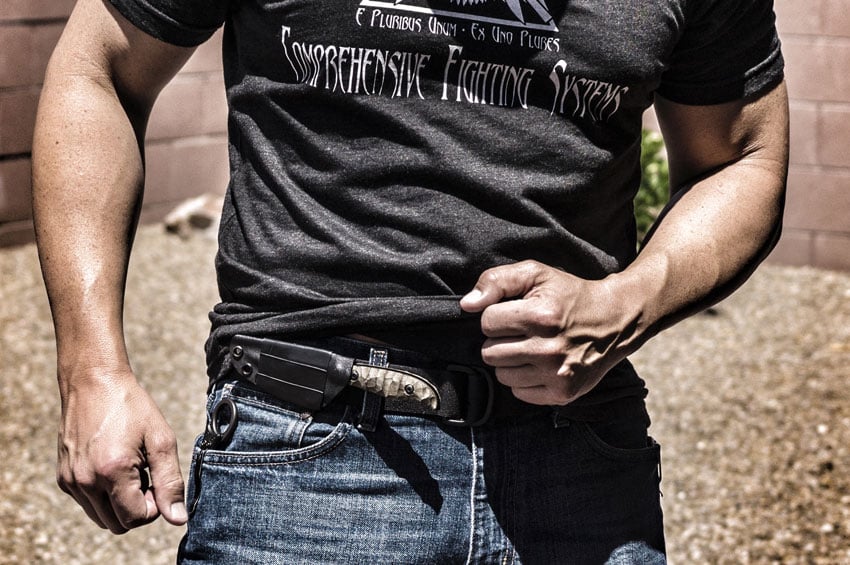
People are constantly asking me for recommendations concerning defensive blades for every day carry. This is always a difficult question for me because it’s more complex than just recommending a particular knife. It’s actually more akin to answering the question, “What car should I buy?”
Well, that depends. Are you a construction worker in need of a working vehicle? A college student who can barely afford to pay rent and needs a cheap option? A race car driver with sponsors who needs the fastest car on the planet? Or someone with a long commute who needs a car that gets 45 MPG?
Most of the time I don’t know anything about someone’s level of skill, personal knowledge, physical limitations or even personal preferences. I don’t know how much they can afford or are willing to spend on a blade, or how much inconvenience they’re willing to tolerate in order to carry and conceal a blade. I probably don’t even know what knives are legal to carry where they live.
All of these things come into play when choosing an EDC blade. So while I can’t give a definitive answer, what I can do is offer some guidelines and considerations for choosing an EDC blade based on my own knowledge and experience.
Folding or Fixed Blade
There’s no arguing a fixed blade knife has structural advantages over a folding knife. The saying holds true, “A folding knife is just a knife that’s already broken.” A fixed blade is also much faster to deploy because it omits the additional opening action required of a folder. Everything else being equal, a fixed blade is generally preferred over a folder. With that being said, there are obvious advantages to a quality folding knife.
A folding knife offers more blade in a smaller package. Since a folder can be equipped with a blade as long as its handle, you can have double the length in half the package. Because folders don’t require the use of a sheath, they offer more carry versatility than a fixed blade, which may be dependent on a belt or other mounting platform. Choosing between a fixed blade or a folder basically comes down to the size of blade you want to carry, where you want to carry it and how much inconvenience you’re willing to deal with.
Locking Mechanism
When choosing a folding knife, the locking mechanism is one of the most important features to consider. The lock is what prevents the blade from closing at a time not intended by the user. Such an event usually results in the laceration or amputation of fingers. A defensive blade MUST have a strong and reliable locking mechanism requiring some type of overt action on behalf of the user to close. A good lock can turn a folder into a virtual fixed blade, so choose wisely.
There are many reliable locking mechanisms on the market. Liner locks, frame locks, button locks and axis locks are all good mechanisms when implemented properly by the manufacturer. Most of these rely on some type of spring and a certain amount of friction and/or contact with the tang (the portion of metal behind the edged portion of the blade).
You’ll want to examine the lock to ensure that a good amount of locking material is in contact with the metal of the tang to prevent slippage. You’ll also want to check to make sure there’s a good amount of spring tension on the lock to prevent inadvertent deactivation. The more robust the lock, the more reliable it’ll be.
Opening Mechanism
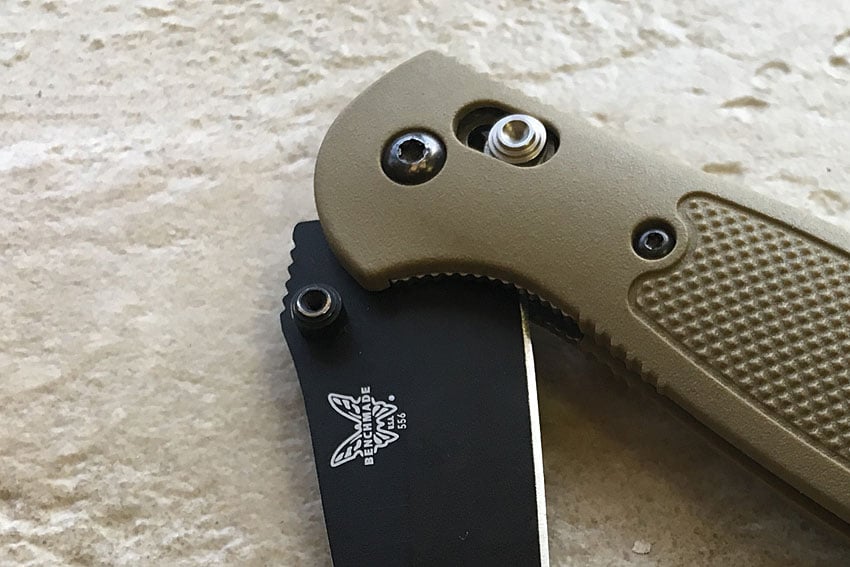
If you choose a folder for your defensive blade, you need to purchase a knife that has some type of single-handed opening mechanism. It’s important to be able to use your live hand (the hand not holding the knife) to grab, check, parry, strike and cover. For this reason, it’s imperative you’re able to open your knife with one hand.
There are many options out there, including thumb studs, flipper mechanisms, thumb holes, push-button auto openers and gravity assists. The opening mechanism you choose is really going to come down to your body type and hand agility. Be sure to choose a knife you can easily open with one hand.
One mechanism I didn’t include because of its uniqueness is the Emerson Wave feature. The Wave was designed and patented by Ernest Emerson and is typically included as an additional opening mechanism. The Wave is a small hook on the top rear portion of the blade that’s intended to catch against the inside of the pocket when drawing the knife, resulting in a simultaneous draw and open. This option brings the folder on par with the fixed blade in terms of deployment speed. I highly recommend looking for the Wave feature when selecting a defensive blade.
Size
The size of your blade is going to depend on the size of your body and how you wish to carry the knife. Obviously, the larger you are, the more knife you can carry and conceal. Your clothing can also play a large part in this decision.
If you live in warmer areas of the country where shorts and T-shirts are the mainstay, you may have a harder time concealing a large blade as opposed to someone living in the northeast. As a general rule, I recommend carrying the largest blade you can. (I wish I could figure out where Conner McCloud packed that sword of his.)
Blade Shape
The shape of the blade may be the option that confuses the most people, but it really just comes down to geometry. The narrower the tip and blade width, such as a spear point or tanto, the more suitable the blade is for penetrating. The slender profile allows the blade to puncture and pass through the target.
The larger the belly and thicker the blade width, the better the blade is for chopping due to the weight of the blade and the amount of cutting edge exposed. Finally, the more obtuse the point is (to include straight and reflex angles) as with a Wharncliffe, sheep’s foot or hawksbill, the more effective the blade will be for cutting. This is due to the energy of the cutting stroke being transferred more effectively toward the tip, causing it to dig deeper into the target.
Every blade shape has its strengths and weaknesses. Choose a blade shape that fits your intended method of use based on your level of skill and type of training. In my opinion, two of the best all-around defensive blade types are the Americanized Tanto and the Wharncliffe. These designs offer a good balance between cutting and penetrating capabilities, so if you don’t know where to start, consider either one of these.
Blade Composition

There are three major variables to consider when selecting the composition of your EDC blade, toughness, hardness and corrosion resistance. Every type of steel has a different chemical makeup giving it more or less of these properties. If you can find the right balance of these properties for the intended task of your knife, in this case defense against a violent human being, you’ve found an excellent blade.
Toughness refers to the steel’s ability to bend without breaking. Toughness is important for any kind of impact use such as chopping, prying or stabbing. The flexibility of the steel allows the blade to “give” a little and act as a shock absorber. Both 5160 and 1095 are very tough steels.
Hardness refers to the steel’s capacity to resist bending, which is the opposite of toughness and directly correlates to the steel’s ability to hold an edge. Harder steels are capable of taking a more acute edge angle, meaning they can be made very sharp. Hardness is measured on the Rockwell Hardness Scale expressed as HRc. Be aware that the harder the steel, the more difficult it can be to sharpen. However, for a dedicated defensive blade this isn’t a real issue. A good example of a very hard steel would be D2.
Corrosion resistance is the steel’s ability to resist rust and discoloration. Water, blood, salt and acids can all lead to rust and stain. Typically, more corrosive resistance means less toughness or hardness, or both. VG10 and N690 are two examples of steels with high corrosive-resistant properties.
One of the benefits of purchasing a handmade knife is many skilled knife makers will differentially treat their blades, a technique that was used by Japanese sword makers. What this means is the spine and cutting edge will be treated to different hardnesses, resulting in a very tough blade with a hard edge. Dawson Knives is one company I know that uses this process on all of their blades.
Carry Options
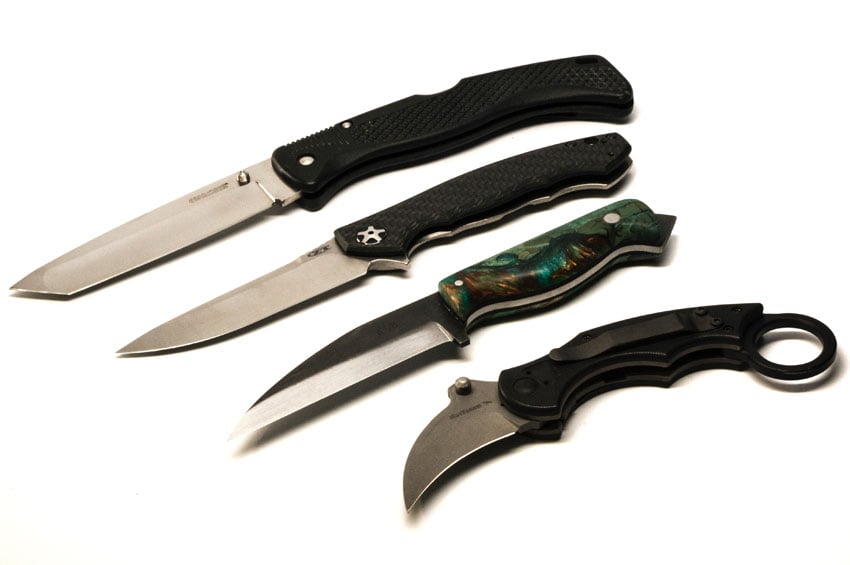
Since we’re discussing choosing an EDC knife, the method of carry can’t be overlooked. The best knife in the world does you no good if it’s not with you and accessible. If you choose a folding knife, make sure it has a pocket clip so it can be positioned inside the pocket or waistband for quick access.
If you’re going with a fixed blade, make sure the sheath can be mounted in a way that allows you to conceal and access the knife in a comfortable and effective manner. You may opt to have a customized aftermarket sheath made as well.
Hand Dominance
Something you may have never considered when selecting a knife is your hand dominance. We live in a right-handed world, so if you’re in the 20% of the population that’s left-handed or you just want to carry a blade on your non-dominant left side, you need to put even more care into selecting your knife.
If you choose a folding knife, make sure it has an ambidextrous opening mechanism. Also ensure it offers a left-side mounting option for the pocket clip. Even if you choose to carry a fixed blade, make sure the sheath can be mounted in a way that works for your hand dominance, depending on how you wish to be able to draw your knife.
One side-note on hand dominance, if you’re going to be deploying your knife with your left hand, you’ll generally want to steer clear of frame locks. Frame locks can be very difficult to open with the left hand under stress because any pressure on the locking mechanism will add resistance on the detent and prevent the blade from opening.
Price

The price of a blade can be a touchy subject for people who aren’t “knife nuts.” Most people don’t want to fork over hundreds of dollars for a knife, but when it comes to good steel, you typically get what you pay for. That doesn’t mean you can’t get a decent defensive blade for a reasonable price though. As a rule of thumb, never spend less that $50 on a defensive blade. Anything under that price range will typically be unsuitable for defensive purposes.
Usually what you’re paying for in a knife is the quality of the steel and overall craftsmanship. A custom handmade knife is going to cost much more than a production knife because of the time and effort that goes into each knife. Since each knife is handmade, the maker will usually test the hardness to ensure every knife meets their expectations.
Custom knife makers also tend to use high quality steels. With higher-end production knives, you’re also paying for the steel. You can typically get a production knife made with a super steel such as S30V or S35Vn for between $150 to $300.
While the decision of how much to pay for a defensive knife is a personal one, my recommendation is you don’t skimp. If you’re going to stake your life on it, you want it to be reliable. For this reason, buy the best quality knife you can reasonably afford, given that it meets all of your other requirements.
Legalities
The last consideration before purchasing a defensive blade for every day carry is the law governing the possession and carrying of knives and concealed weapons in your country, state and city. Here in the United States, edged weapons laws vary drastically from location to location.
It’s important you familiarize yourself with the laws in all of the jurisdictions you regularly carry an edged weapon. These laws may dictate what types of knives you’re allowed to carry, which plays a major role in your EDC selection.
You may find your area has statutes outlawing the carrying or even ownership of automatic or assisted-opening knives, non-metallic knives, double-edge knives, knives with blades over a certain length, fixed-blade knives or even tactical knives (knives with a pocket clip). You may even discover that your state forbids concealed carry of certain knives without a permit while allowing for open carry without restriction.
Laws are made by politicians, so they don’t always make sense. One of the best sources for up-to-date knife laws is KnifeRights.org. Not only do they maintain an exhaustive database of knife laws for every state in the US with constant legal updates, but they also advocate for the rights of knife owners.
Final Thoughts
There’s no magic recipe for choosing an EDC defensive blade, but I hope this article gives you enough information make the right decision for you. Your defensive blade should be dedicated to just that. If you want to cut open boxes or do other general tasks, then get a knife suited for that.
Your defensive blade should always be sharp and ready, for you never know when you may need it to save your life. Even in times of peace, the warrior’s blade is sharp and ready.
Editor-in-Chief’s Note: Chad McBroom is the owner and founder of Comprehensive Fighting Systems and specializes in the practical application of edged and impact weapons. Chad is a freelance writer who regularly contributes to Black Sheep Warrior, BladeReviews.com and other publications. He’s also the author of the book Solving the Enigma: Insights into Fighting Models and has contributed to several books on blade combat. Chad is a blade designer and consultant, using his extensive knowledge of edged weapon tactics to help design some of the most versatile edged weapons on the market.






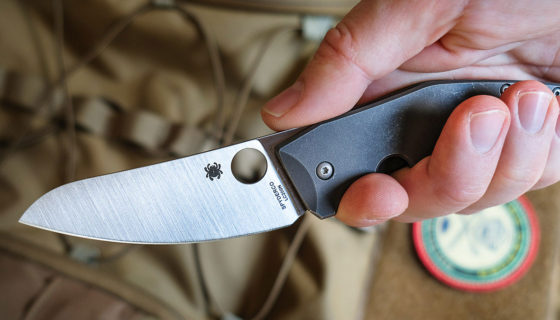
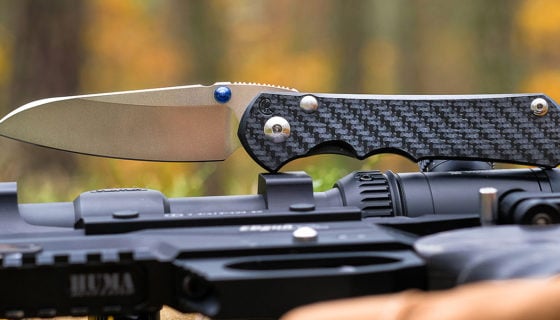
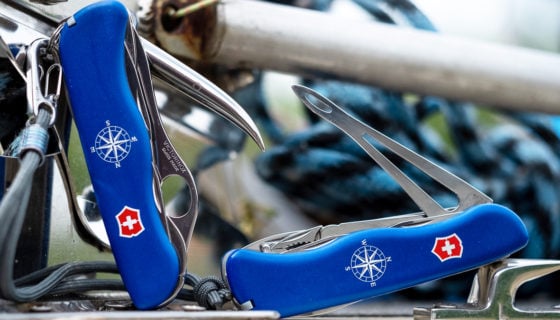
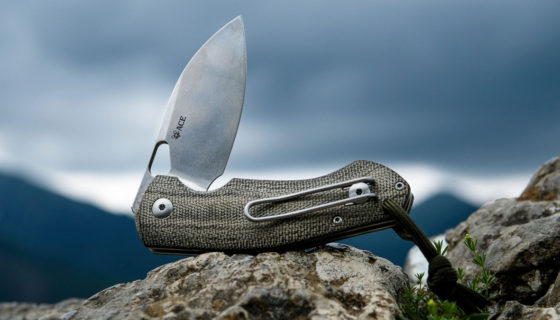

Discussion